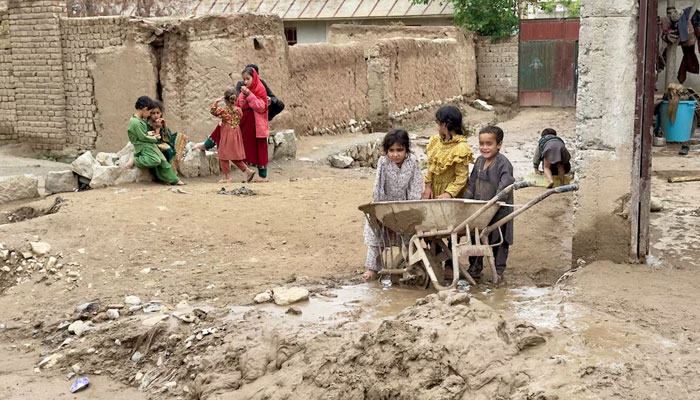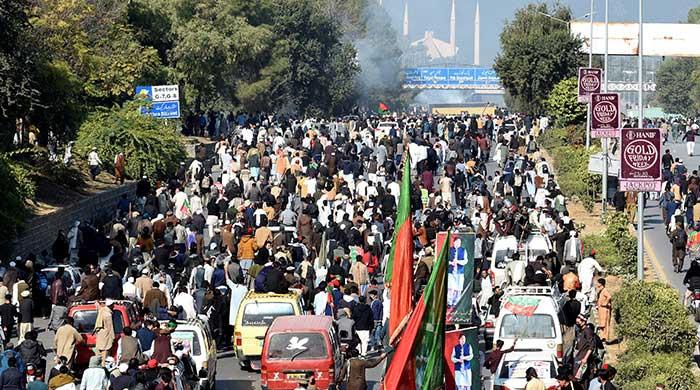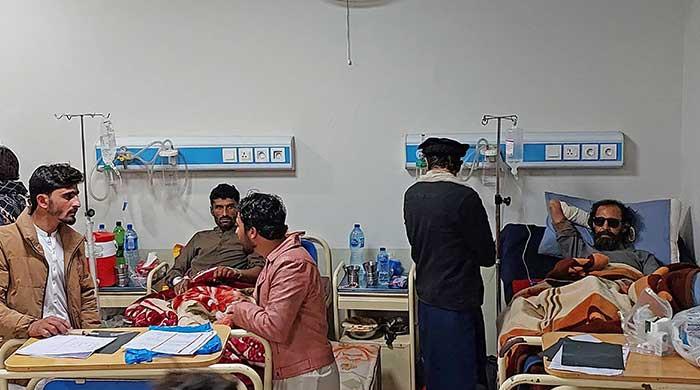Pakistan offers condolences to Afghanistan as over 300 dead in devastating floods
More than 300 people killed and thousands of houses destroyed or damaged in Baghlan alone, says UN body
May 11, 2024

- More than 300 people killed in flash floods in Afghanistan.
- Pakistan stands in solidarity with people of Afghanistan, says FO.
- “We pray for the early recovery of those missing,” says spox.
Pakistan on Saturday expressed condolences on the tragic loss of over 300 precious lives and widespread damage to properties caused by devastating floods in Afghanistan.
More than 300 people were killed in flash floods that ripped through multiple Afghan provinces, the United Nations said, as authorities declared a state of emergency and rushed to rescue the injured.
In a statement, Foreign Office Spokesperson Mumtaz Zahra Baloch said: “The government and the people of Pakistan express their heartfelt condolences on the tragic loss of life and widespread damage to property caused by heavy rains and flash floods in several provinces of Afghanistan.”
She further said that their thoughts and prayers were with the families of the victims, injured and the communities affected by this natural calamity.
“We pray for the early recovery of those missing.”
Pakistan stands in solidarity with the people of Afghanistan during this difficult time, she added.
It is pertinent to mention here that heavy rains on Friday sent roaring rivers of water and mud crashing through villages and across agricultural land in several provinces, with northern Baghlan one of the hardest hit.
More than 300 people were killed in flash floods that ripped through multiple Afghan provinces, the UN’s World Food Programme said Saturday, as authorities declared a state of emergency and rushed to rescue the injured, AFP reported
In one district, Baghlani Jadid, up to 1,500 homes were damaged or destroyed and "more than 100 people died", Mohammad Fahim Safie, the National Programme Officer leading IOM's emergency response said, citing government figures.
Officials from the Taliban government had said 62 people had died as of Friday night.
"Hundreds of our fellow citizens have succumbed to these calamitous floods," Taliban government spokesperson Zabihullah Mujahid said in a statement posted to X on Saturday.
He did not differentiate between the numbers of dead and injured, but told AFP dozens had been killed.
Rains on Friday also caused heavy damage in northeastern Badakhshan province, central Ghor province and western Herat, officials said.
Emergency personnel were rushing to rescue injured and stranded people, according to the defence ministry.
"In addition to human casualties, these floods have also caused huge financial losses to the people," said Ahmad Seyar Sajid, head of the natural disasters management department in northern Takhar province, where he estimated 20 people have died in the flooding.
State of emergency
The defence ministry ordered multiple branches "to provide any kind of assistance to the victims of this incident with all available resources".
The air force said it had started evacuation operations as the weather cleared on Saturday, adding that more than a hundred injured people had been transferred to hospital, without specifying from which provinces.
"By announcing the state of emergency in (affected) areas, the Ministry of National Defense has started distributing food, medicine and first aid to the impacted people," it said.
Video footage seen on social media from Friday showed huge torrents of muddy water swamping roads and bodies shrouded in white and black cloth.
In one video clip, children are heard crying and a group of men are looking at floodwaters, in which bits of broken wood and debris from homes can be seen.
Since mid-April, flash flooding and other floods had left about 100 people dead in 10 of Afghanistan's provinces, with no region entirely spared, according to authorities.
Farmland has been swamped in a country where 80 percent of the more than 40 million people depend on agriculture to survive.
Afghanistan — which had a relatively dry winter, making it more difficult for the soil to absorb rainfall — is highly vulnerable to climate change.
The nation, ravaged by four decades of war, is one of the poorest in the world and, according to scientists, one of the worst prepared to face the consequences of global warming.












